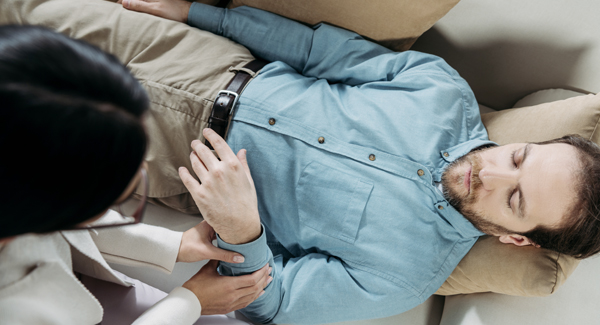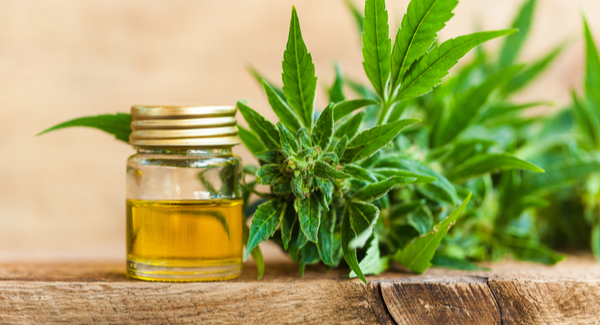Aromatherapy for Arthritis Relief
Learn how scents can aid pain relief, relaxation, sleep and overall well-being.
By Mary Margaret Chappell and Jennifer Davis
Aromatherapy won’t cure your arthritis, but research shows that it can have a powerful impact on your well-being, including your level of pain.
“Certain scents activate smell receptors in the nose, which triggers a reaction in the nervous system,” says Julie Chen, MD, an integrative medicine physician in San Jose, California. This, in turn, stimulates the part of your brain that controls emotion, triggering the release of hormones such as feel-good dopamine.
Research corroborates the use of aromatherapy for pain relief. In fact, a study from the Catholic University of Korea in Seoul showed that people with arthritis who sniffed a fragrant blend that included lavender, eucalyptus and rosemary experienced less pain and better moods than those who didn’t.
“Aromatherapy is effective because it works directly on the amygdala, the brain’s emotional center,” says Mehmet Oz, MD, director of Columbia University Medical Center's Integrative Medicine Center in New York City. “This has important consequences because the thinking part of the brain can’t inhibit the effects of the scent, meaning you feel them instantaneously.” Dr. Oz, a cardiovascular surgeon, studied aromatherapy to find alternative methods to expedite recovery time and reduce anxiety in heart patients.
Of the many uses of aromatherapy, pain relief and anxiety reduction are just two; improved mood, relaxation, sleep and rejuvenation are other common objectives.
Essential oils are the foundation of aromatherapy. The oils – extracted from plants, flowers, herbs and trees – are most often used for their scent, but they can also be mixed with lotions or alcohol and used as bath or massage products. “It doesn’t work for everyone, but some have good outcomes,” says Sue Cutshall, a Mayo Clinic integrative health clinical nurse specialist. Most essential oils have few side effects or risks when used as directed, but as with other “natural” treatments, some can cause harm so exercise caution when using them. Undiluted essential oils can provoke skin problems, and citrus essential oils can increase sun sensitivity.
How to Use Essential Oils
Dr. Oz and his collaborator, clinical aromatherapist Jane Buckle, PhD, recommend using 15 drops of an essential oil, such as lavender, chamomile or eucalyptus, diluted with 1 oz. (2 Tbsp.) of a “carrier” or neutral oil, such as almond, avocado or jojoba, dabbed directly on the skin. This means you literally have scented relief on you when you need it, says Dr. Oz. More is not better, so use it wisely and follow dosing instructions. Don’t ingest essential oils and avoid using on babies, children or if you are pregnant. Some product labels may use the words “therapeutic grade,” however, this is for marketing purposes only and has no clinical significance. Look for 100% pure oil without additives like alcohol and select only those in dark bottles, heat and light can degrade oils over time.
Which Scents Work
Bergamot and lavender for pain: This blend reduced pain levels in people with chronic pain who inhaled it regularly over four months, a 2014 study in BioMed Research International found.
Try it: Blend 2 to 12 drops of essential oil with a tablespoon of milk or vegetable oil (undiluted essential oil can irritate skin), and add it to a bath. Or mix 15 to 20 drops with 1 ounce of jojoba or almond oil to dab on your wrists or massage into skin.
Ginger for pain: A study in Complementary Therapies in Medicine showed that people with moderate to severe knee pain reported less pain and stiffness after they were massaged with a ginger-and-orange oil than an unscented one.
Try it: Mix 10 to 15 drops of ginger essential oil with 1 ounce of jojoba or almond oil; massage directly on the skin.
Lavender for better sleep: People slept more soundly, spent more time in restorative, slow-wave sleep and woke up more refreshed when they smelled lavender before bedtime, according to a study in Chronobiology International.
Try it: Add a few drops of lavender essential oil to a diffuser or spritz your sheets with an aromatherapy spray. Make your own by mixing 3 ounces of water with 30 to 45 drops of essential oil to a spray bottle; shake before each use.
Citrus for mood: Lemon scent can lift your mood, according to a study in Psychoneuroendocrinology, and another study in the Journal of Alternative and Complementary Medicine showed that people who received sweet orange aromatherapy had less anxiety and stress during a high-pressure cognitive test than those who didn’t.
Try it: Place a few drops on a tissue or cotton ball and stash it in a zip-top bag to smell throughout the day.
Vanilla for relaxation: In a Columbia University Medical Center study, subjects who smelled vanilla while completing stress tests had more stable heart rates and blood pressure readings than those who took the tests in an unscented environment.
Try it: Place a few drops of vanilla extract onto a handkerchief and carry it with you to smell throughout the day.
Peppermint, jasmine, and citrus for recharging: These scents make you feel more awake. “Even though these scents are pleasant, they act as mild irritants and the effect is similar to that of smelling salts,” explains Alan Hirsch, MD, neurologist at the Smell and Taste Treatment and Research Foundation in Chicago.
Try it: Sprinkle a few drops of the essential oil of your choice in a candle diffuser, or dilute two drops in 1 tsp. of avocado or almond oil, then rub it onto the back of your hand.
Green apple for headache pain: “We found that the smell of green apples reduced the severity and duration of migraine headache pain and may have a similar effect on joint pain,” says Dr. Hirsch. “The scent seems to reduce muscle contractions, which are the main cause of pain in migraines.”
Try it: Eat a green apple for a snack or bathe with green apple bath salts.
What to Plant In an Aromatherapy Garden
Dr. Hirsch believes you don’t have to limit yourself to essential oils. Limiting the length of your exposure to certain scents, however, will ensure they remain effective. “Short-term exposure is key because people stop responding to scents after a few minutes.”
A garden or even a window box full of fragrant plants that conjure pleasant memories can aid health, says Naomi Sachs, a landscape architect who specializes in designing restorative landscapes and gardens that promote health and well-being.
Sachs recommends making your garden a multi-tasker by planting a fragrant tree that also bears fruit, or herbs that smell great and can be used to add flavor to your meals. Try these five garden starters to get your nose and health revving:
Basil. This popular herb has a sweet aroma that can uplift moods. Feeling foggy? Basil oil also is used to sharpen concentration and relieve headaches. Add a few basil leaves to any sautéed vegetable.
Lavender. A blue-purple flower known for its calming qualities and can encourage restful sleep. “Lavender is a multi-sensory experience,” says Sachs. “It’s a beautiful blossom, the fragrance is wonderful and it has tremendous medicinal properties to help you relax.” Place a few blossoms in a nightstand vase.
Rosemary. An herb with highly aromatic needles, rosemary has been shown in studies to increase alertness and to reduce levels of the stress hormone cortisol. Add a few sprigs to a flower arrangement in the kitchen and use it to season anything from salmon to potatoes.
Mint. Of about 600 plants in the mint family, spearmint and peppermint may be the most popular. A whiff of peppermint can increase alertness and performance. Brew a cup of minty tea to kick mid-afternoon drowsiness.

Stay in the Know. Live in the Yes.
Get involved with the arthritis community. Tell us a little about yourself and, based on your interests, you’ll receive emails packed with the latest information and resources to live your best life and connect with others.



